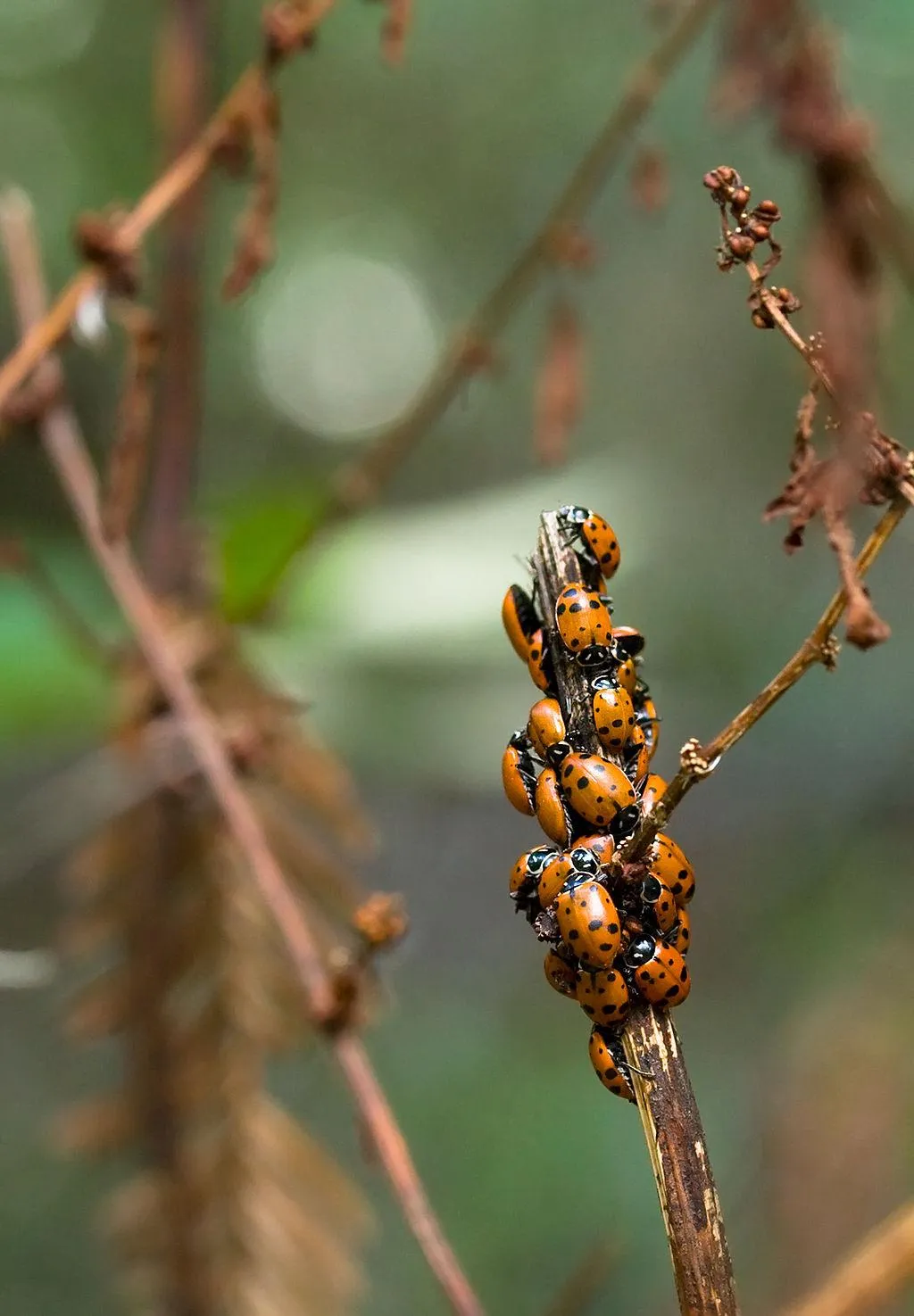A 10-Mile-Wide Ladybug Swarm Buzzed Over San Diego
At first, meteorologists thought the shadow on the radar was a storm. But this cloud didn’t bring rain
/https://tf-cmsv2-smithsonianmag-media.s3.amazonaws.com/filer/f7/8e/f78eacd9-606e-4ff1-8aa1-0377a8475af4/ladybug_radar.jpg)
On Tuesday evening, meteorologists spotted a shadow on the radar that appeared to be a surprise rain shower looming just north of San Diego—but rain was not expected that night and didn’t seem likely. It wasn’t a storm cloud at all, they found, but a massive swarm of ladybugs flying thousands of feet above the city.
The blob on the radar stretched 80 miles by 80 miles, but most of the bugs were concentrated in a 10-mile-wide swath, with insects hovering between 5,000 and 9,000 feet in the air. Jaclyn Cosgrove at The Los Angeles Times reports it wasn’t necessarily an Old Testament swarm devouring everything in its path. From the ground, the sight wasn’t that spectacular.
“I don’t think they’re dense like a cloud,” San Diego National Weather Service meteorologist Joe Dandrea says. “The observer there said you could see little specks flying by.”
After nightfall, onlookers lost track of the insect cloud, which was heading south toward Mexico, and it was never relocated.
While such a massive ladybug migration is unusual, ladybug gatherings known as “blooms” are not. California is home to 200 different species of ladybugs, and entomologists aren’t sure which variety was responsible for the cloud. The prime suspect is Hippodamia convergens, the convergent lady beetle, which is known to migrate between California’s agricultural valleys and alpine regions, as John Losey, an entomologist at Cornell University and director of the Lost Ladybug citizen science project, tells NPR’s Merrit Kennedy and Dani Matias.
Various cues, including availability of food resources, temperature and day length, tell the beetles to move from the lowlands to mountains. Usually, however, they don’t move en masse. “But somehow, the combination of cues must have all sort of synchronized so that they went at a very similar time,” Losey says.

Losey says there are other ways to interpret the massive swarm as well. Giving it a positive spin, he says it could be a sign that agriculture in California is doing well and populations of ladybugs are booming because of that. On the other hand, he says something else, like climate change, could be putting the ladybugs out of sync with their natural cycles, leading them to swarm to find food resources.
It would be welcome news if it was a sign of good health. Like many insect species, ladybugs are seeing steep declines. The main culprit for our red-and-black, polka-dotted friends is invasive Asian lady beetles, Harmonia axyridis. Originally brought to the United States in 1916 to control pests in greenhouses, the insects escaped and spread across the U.S. In winter, thousands creep into cracks and crevices of homes, causing serious infestations.
But they are not just a problem for humans. Research shows that the invasive bugs have a supercharged immune system that allows them to carry large amounts of a ladybug killing fungus in their systems, which they spread to other species. That, along with pesticide use and climate change, may explain why native ladybugs are on the decline. For instance, the nine-spotted ladybug, Coccinella novemnotata, one of the most common from coast to coast, was declared the state insect of New York in 1989. Soon after, it was gone from the state and much of its range, along with several other once-common ladybugs.
Ladybugs aren’t the only natural phenomenon to show up on radar. Bird migration shows up on radar so well that ornithologists and bird watchers use it to keep tabs on bird movements during nightly spring flights. Clouds of migrating grasshoppers and beetles occasionally pop up on radar too. And in 2016, a study analyzed 10 years of radar data to reveal two- to five-trillion insects migrate over southern England each year.